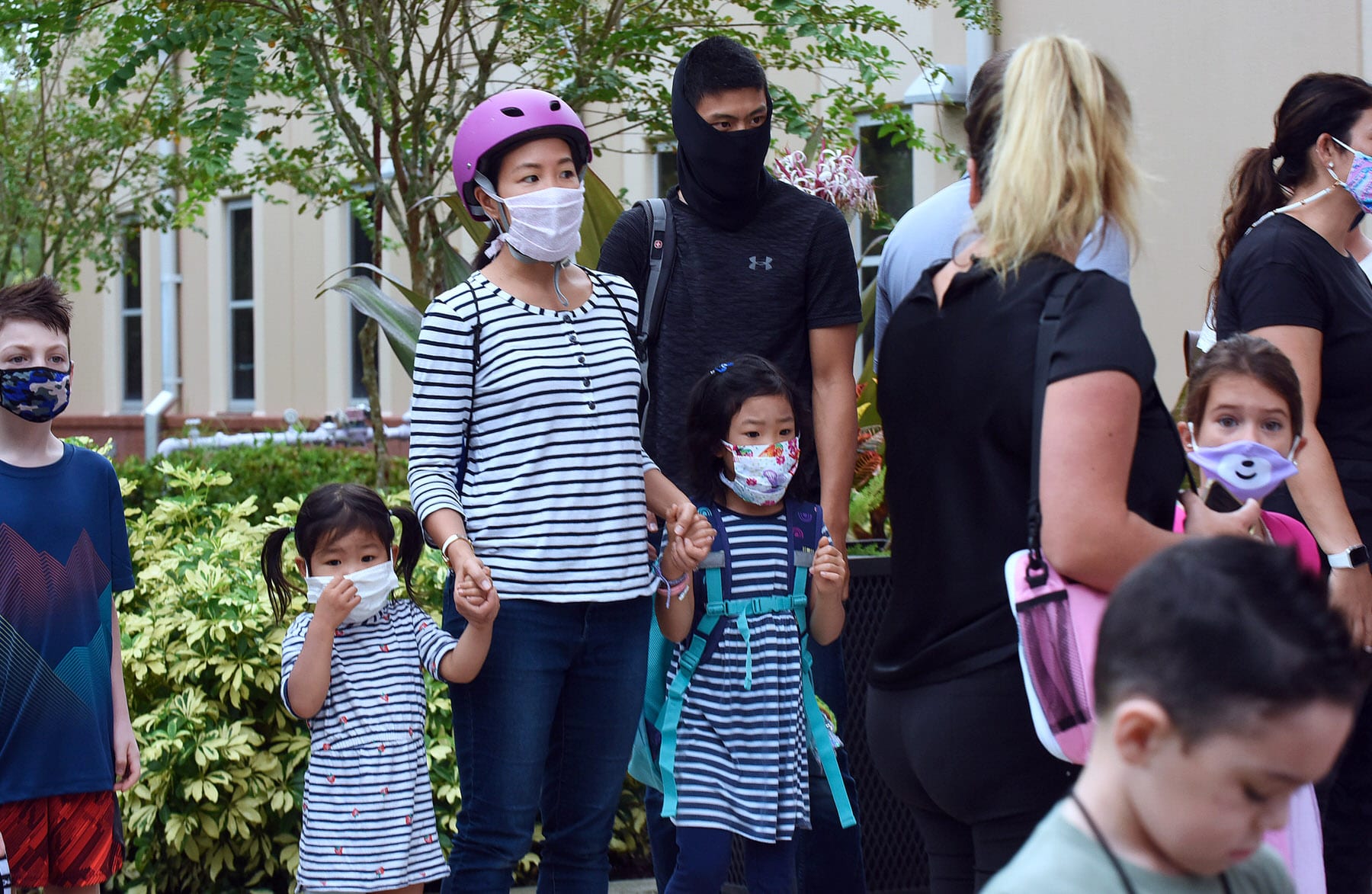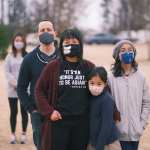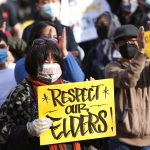Joanna Lee’s 4-year-old daughter had been going to the same California day care facility since she was 11 months old before COVID-19 shut it down in March 2020. All of a sudden, the young child spent her days at home with half an hour of “remote pre-school” while her parents worked from home. When the school reopened in June, Lee ultimately decided not to send her daughter in.
“I hope [school] is a safe space for her, but who knows?” said Lee, who identifies as Chinese-American. “It’s hard to know — it’s been a year. It’s always in the back of my mind: safety from contracting a deadly disease and from being harassed by other students.”
As schools continue to wrestle with questions of in-person learning, many families appear to have opted to keep their kids home. According to the latest federal data, Asian American children in elementary and middle schools are in remote class at much higher levels than other racial groups. In March, more than 60 percent of Asian American students continued full-time remote learning, compared with 47 percent of Hispanic students, 45 percent of Black students, 27 percent of Native American students and 19 percent of White students.
In response to the findings, U.S. Secretary of Education Miguel Cardona said in a statement last week that “we must maintain a high level of urgency” on a national and local level in getting students back to in-person learning.
“While we’ve made important progress, I will not be satisfied until 100 percent of schools are safely open for full-time in-person learning for all students,” Cardona said. “We are still seeing a much lower percentage of Black, Hispanic and Asian students enrolled in full time in-person learning compared to their White counterparts.”
The 19th reached out to Asian American mothers across the country and found a mix of factors behind their hesitancy to return their children to classrooms.
For Lee, a researcher at the University of Southern California, there was the unpredictability of the virus, her aging parents and a rise in anti-Asian harassment across the country to consider.
More than a quarter of all Asian Americans live in multigenerational households — homes that include two or more adult generations or both grandparents and grandchildren, according to the Pew Research Center. In addition, the majority of Asian Americans are immigrants, which keeps them connected to other parts of the world and aware of how other Asian countries more successfully contained the pandemic with safety precautions.
In April 2020, Lee said, her father — who lived nearby — had a medical emergency that required her to bring him to the emergency room at a time when little was known about the virus. She realized amid the fear and the weight of responsibility that day that she had to prioritize both her parents’ and her daughter’s care. She knew they’d all be safer at home, where her daughter continued to attend school remotely until this month — nearly one year after the school had reopened for in-person learning.
“Honestly, every day I’ve doubted whether I’ve made the right decisions,” Lee said. “We’ve never been through something like this before. As parents, there’s always self-doubt, but I erred on the side of safety when it comes to my parents.”
OiYan Poon, a Chinese-American mother in Chicago, said she also decided to keep her kindergartner home when the public schools reopened to in-person learning.
“I know she wants to be back in school with kids her age,” Poon said. “But the teachers have been told they can’t come close. … Kindergartners are going to cry and be upset. You won’t have a teacher or peers that can comfort her. It feels really wrong.”
Poon said she also didn’t feel that the school district was forthcoming with data and information on air filtration in the older buildings, “especially for 5- and 6-year-olds.” The decision had little to do with concerns about anti-Asian sentiment, she said. She and her husband had chosen the school specifically for its diversity and focus on intercultural learning and social justice.
“But if I was still in Colorado — which is where we were last year — I would have been worried about living in a predominantly White school district and would not have sent her in either,” Poon said. “I would not have felt safe.”
In 2020, hundreds of Asian American and Pacific Island youth reported incidents of discrimination to Stop AAPI Hate, a coalition of community organizations. More than 80 percent said they were verbally harassed and more than half said the perpetrators used anti-Chinese hate speech, blamed China for the virus and/or mocked Chinese dietary habits. Girls were nearly three times as likely to report hate than boys.
Jigna Desai, professor at the University of Minnesota and mother of two, said she taught many Chinese international students during the pandemic who described being inundated with microaggressions and more aggressive harassment. And her Hmong and Vietnamese students also voiced concerns about how they’re treated if they cough, she said.
“Even my mom said she doesn’t want to go for a walk by herself anymore,” said Desai, who identifies as South Asian American.
Desai also directs a program that connects university students with public middle and high school students in Minneapolis to discuss and create media projects around racial and social justice issues. Over the past five or six years, Desai said she has worked with more than a thousand students.
“A lot of Asian American parents have said their kids feel safer being at home,” Desai said. “I’ve noticed that, over the years, a lot of the Asian American boys create their mini documentaries around the experience of being bullied.”
Violence against Asian Americans is rarely talked about in classrooms, Desai said, but “The traumas are invisible. If no one sees the bullying, kids are carrying that.”
Hate against the AAPI community has made headlines recently following several high-profile incidents, including the shootings in Atlanta that killed six Asian women. And there has been a reported spike in hate crimes exacerbated by former President Donald Trump’s xenophobic rhetoric describing the pandemic.
But racism against Asians in the United States is far from new. The 1875 Page Act, which was one of the first immigrant exclusion laws, denied many Asian women from immigrating for “lewd or lascivious reasons.” The Chinese Exclusion Act, passed in 1882, was meant to curb the influx of Chinese immigrants for a decade.
“Obviously, this is not a new thing in general, but it rears its head during some of these moments,” Lee said. “I do feel more vulnerable and conspicuous, but honestly we’ve all had incidents happen to us… even when there’s not a national crisis.”
The Atlanta shootings were particularly traumatizing, Lee said. She struggled to process the intersection between misogyny and anti-Asian racism and what it means to raise an Asian American daughter.
“At what point do I start talking to her about these things?” Poon said. “She’s got all of these girl power things, but how is that connected to being an Asian American girl specifically? I’ve been talking to friends who are Black moms. When I started asking those questions, they reached out and said: ‘Just do your best to prepare them; you can’t be there at every second to protect them from what is inevitable.’”






